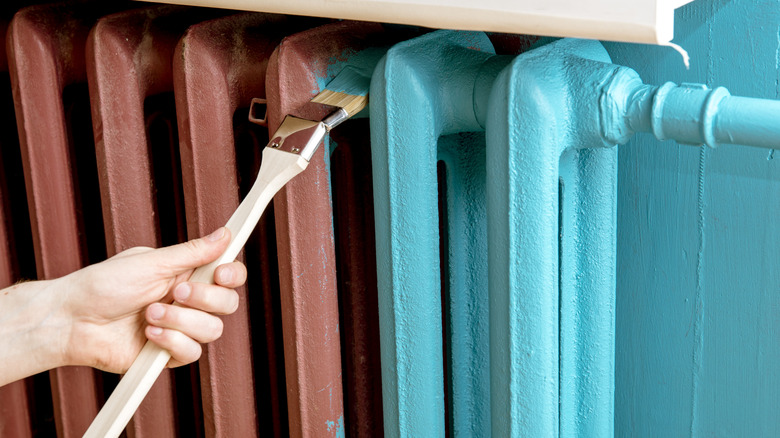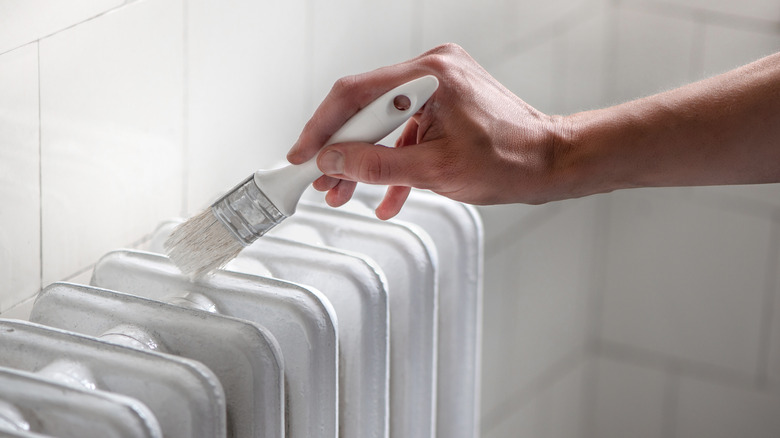Avoid This Huge Mistake When Painting Your Radiator
We may receive a commission on purchases made from links.
No matter how effective radiators may be in keeping your home warm through the winter months, there's no getting around this cold, hard truth: they mar the aesthetics of nearly every room they're in. However, giving your radiator a makeover that upgrades your space doesn't have to be complicated or expensive. A fresh coat of paint can instantly give a radiator new life, either by helping it blend into the room or turning it into a bold design statement. But while painting a radiator is fairly easy, choosing the right paint is crucial. The biggest mistake to avoid is using a paint that isn't heat-resistant, as it can crack, peel, and yellow when exposed to higher temperatures. It can also pose safety risks, including the potential release of volatile compounds and the risk of fire in worst-case scenarios.
Depending on the type, a radiator can reach temperatures of 150 to 180 degrees Fahrenheit. A heat-resistant paint can withstand regular exposure to high temperatures without changing its color, texture, or finish. There are several types of heat-resistant paints suitable for radiators. Alkyd enamel paint offers an excellent color selection and is heat-resistant up to 194 degrees, though brighter shades can sometimes yellow. Water-based, heat-resistant paints also work well, especially if you want a low-odor formula. Another benefit of using a heat-resistant paint is that it's often formulated to cover surfaces in thin coats, so it won't interfere with the radiator's ability to transfer heat.
Here's the right way to paint a radiator
After choosing a heat-resistant paint, the most important step in painting a radiator is preparing the surface. Start by turning it off and allowing it to cool completely, which may take a few hours. Next, clean the radiator thoroughly, using warm water and dishwashing detergent to remove dirt and dust. If there are areas with rust or peeling paint, a wire brush can be effective for removing loose particles. Finally, roughen the radiator's surface with fine sandpaper to ensure that the paint adheres properly. Remove any dust with a damp cloth.
If your radiator's finish is bare metal, it's best to apply a metal primer before painting for better adhesion. You can use a heat-resistant spray paint, such as Krylon High Heat Spray Paint, or a paint sprayer with a heat-resistant formula to speed up the process. Alternatively, hand painting works well, too, especially if you want to ensure complete coverage. Be sure to use a synthetic-bristle brush for oil-based paint and a natural-bristle brush for water-based formulas.
It's usually best to start painting at the top of the radiator and move downwards. Use long, steady strokes to prevent streaks while still keeping the coat as thin as possible. Allow the paint to dry completely before applying a second coat. In some cases, the radiator may require a third coat for full coverage. Once you're happy with the finish, though, let the paint fully cure according to the paint's instructions before turning the radiator back on.

